Hello everyone. I'm Rodrigo, and you know me best from the Pokémon TCG. But today I'm thrilled to write this article about one of my favorite games and one that I have an immense affection for: Castlevania.
And to start, on September 26th, 2024, the franchise celebrated its 38th anniversary, where we will focus mostly on the canonical games of the franchise and its complementary media that are part of this official timeline; and even with some considerations regarding other games from other universes, where the concept of multiverse also applies here.
And I’d like to point out that because it’s a Japanese media franchise, so everything I will mention in the article will be based mainly on the Japanese manuals and original Japanese localizations of the games because much of the American material has been distorted, generating misunderstandings and misinterpretations about the lore and characters, and if by any chance I point out an American quote, it’s because it’s in accordance with the original material.
With that said, it’ll be a great pleasure to write about details, curiosities, and mention each story in the franchise.
Introduction
The Concept Behind the Game


Originally called Akumajō Dracula (悪魔城ドラキュラ) (phonetically, it would be Akumajou Dorakyura), it’s literally translated as "Dracula's Demon Castle", and this name caused many headaches for the West, where the senior vice president of Konami of America, Emil Heidkamp, decided to make a combination of words with "Castle" and "Transylvania" and thus create the name we know today as Castlevania, due to a movement that happened in the 80s called "Satanic Panic", where there was a media persecution of video games, comics and RPGs, as the best known case being of the RPG Dungeons & Dragons.
The Creator and his Inspirations

The game was created by Hitoshi Akamatsu, and was the precursor to the first three classic games of the FAMICOM Disk System or NES (Nintendo Entertainment System, as it was known in the West): Castlevania (Akumajō Dracula), Castlevania II - Simon's Quest (Akumajō Dracula II - Noroi no Fūin) and Castlevania III - Dracula's Curse (Akumajō Densetsu -- The Legend of the Demon Castle).

His inspirations were more of a satire of the "Monster Verse" from Universal Studios, with classic horror movies like "Dracula", "The Creature of Doctor Frankenstein", "The Mummy", and other famous pieces of the generation; this also added to the principle of the adventure, where he was inspired by the Belmont family (Berumondo, in Japanese, as it’s pronounced) for the use of the legendary whip, the Vampire Killer, with the "Indiana Jones" films where he uses the same weapon.
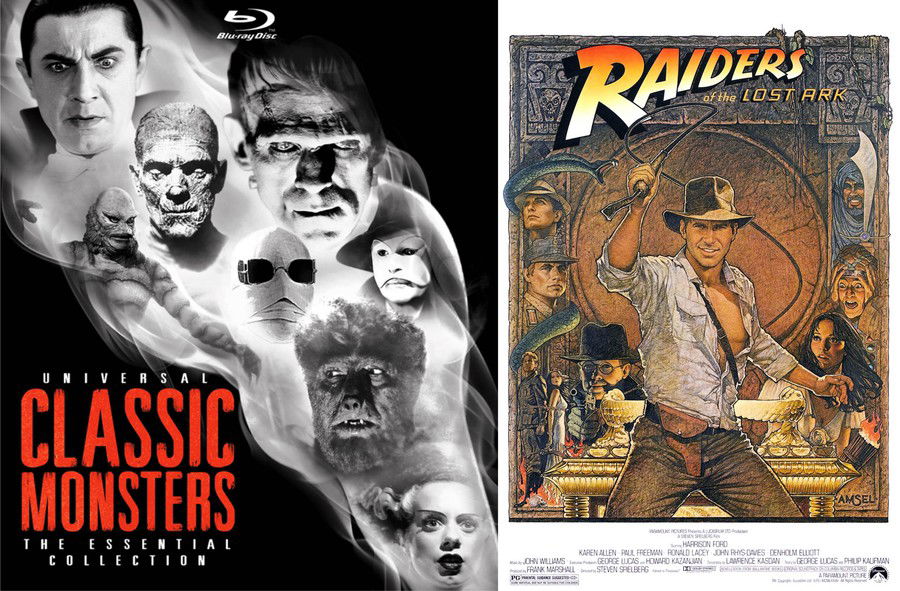
Official Japanese Trailer
So much so that if you notice in the first three FAMICOM/NES games, they all have their openings like a kind of old film reel, showing precisely this artistic intention.
_______________________________________
Akumajō Dracula: Gameplay
_____________________________________
Akumajō Dracula II - Noroi no Fūin: Gameplay
_______________________________________
Akumajō Densetsu: Gameplay
_______________________________________
Having the creativity inspired and defined, a genre was born that many knew as ClassicVania, where the Belmont of the time needs to go through the stages of Count Dracula's castle and depend only on the player's skill, where these games were known for their extreme difficulty (at least in the western version) for the Knock Back suffered, the rigid gameplay of Simon Belmont (main character in Castlevania I and II) and the jump that needs to be thought out and done with millimeter precision, because if you make a wrong move, you’re severely punished. This was the basis of the first ClassicVanias of the NES era.
ClassicVania: Classic mechanical concepts of the first NES games
And to fight the creatures of darkness, the whip is used only in a horizontal direction, in which it gains upgrades to increase its range and also shape, going from the aesthetics of a leather whip to a Morning Star in its most evolved phase; together with the Sub-Weapons, auxiliary weapons for hunting vampires and monsters in general, where each of them has specific characteristics to be able to fulfill certain strategies and are consumed by Hearts, that are the "fuel" for their use in the game; and these Sub-Weapons can be enhanced with throwing accelerators, known as Double Shot and Triple Shot, as the name describes, being able to throw twice or three times more frequently.
Sub-Weapons
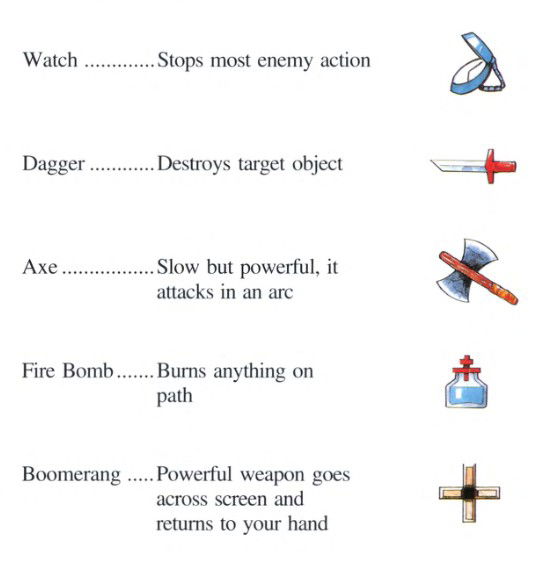
► Dagger: The most mediocre weapon in the game and not very effective. Generally used by beginners, it can be used to destroy the monsters in the game in the first stage, such as all the zombies and small bats.
► Axe: The weapon with a parabolic projection, where it starts from the bottom and goes up, reaching enemies in an angle of 45º degrees; which is excellent against the first boss of the game, the Giant Bat.
► Stopwatch/Time-Stop Pocket Watch: It’s a strong weapon, but with a high consumption of Hearts. It has the power to “freeze time” for a few moments, giving you an advantage to get through some sections that are difficult. But this Sub-Weapon does not affect Dracula, as for a “dead” person, time is irrelevant.
► Holy Water: The strongest Sub-Weapon in the game combined with the Triple Shot, where its throw is frantic, as it conditions a lock on the enemy in the place where the flame is fixed, leaving them immobile. It’s perfect to finish off Death (Shinigami), Dracula's right-hand man, being the penultimate boss of the first classic game.
► Cross/Crucifix: The most versatile Sub-Weapon in the game, as it can project itself like a kind of "boomerang", going horizontally for a certain range to hit its target and then returning to the character, but it can go over its original shooting and make the projectile continue to go along its return, hitting enemies that are in blind spots behind your character.


The whip itself has several stages of evolution and is just A WHIP, which becomes more powerful as it gains various upgrades, even taking the form of a Morning Star, but in lore it continues to be "the legendary Vampire Killer".
And like a magical whip, in the official lore, it has an alchemical origin and can vary in forms, which I will briefly mention in the story part of the article.
The Beginning of the Lore Creation: Konami Departments and the Repair made by Koji Igarashi
In the past, Konami would release its games with different teams from operational centers spread throughout the country, and as a result, the stories of each game could easily conflict with each other, as, for example, with the release for the Game Boy Color with the game from the Christopher Belmont saga, in Castlevania: The Adventure (originally Dracula Densetsu) in 1989 with the game by Hitoshi Akamatsu, with the Ralph C. Belmont (or Trevor Belmont) saga Castlevania III: Dracula’s Curse (Akumajō Densetsu), which was released for the FAMICOM/NES also in 1989 (considering the releases in Japan, it’s worth noting) - and that both games “take place” 100 years before the events of the first Castlevania, from the Simon Belmont saga.
However, with the arrival of Koji Igarashi (also known by the nickname IGA), one of the creative minds behind the popular Symphony of the Night (Akumajō Dracula XX: Gekka no Yasoukyoku) and also one of the programmers of its predecessor, Castlevania: Rondo of Blood (Akumajō Dracula X: Chi no Rondo), he addressed this issue placing the adventure of Ralph C. Belmont (Trevor Belmont) from Dracula's Curse dating it in 1476, while the first adventure of Christopher Belmont, from Castlevania: The Adventure was in 1576; thus addressing the issue of chronological cohesion so that there could then be this line of successors of the family, until reaching Simon Belmont, in the classic NES game, which takes place in 1691.

IGA, with Toshiharu Furukawa, had already outlined a larger plan to expand the Castlevania universe since 1997, and when IGA became the official director of the franchise, he reorganized the canon, straightening the chronological line of the games and beginning to respect the source material coming from Hitoshi Akamatsu on the pillar that the Belmonts are the most important characters in the story and so much so that in several interviews of his own, he praises Dracula's Curse (Akumajō Densetsu) as his direction of the stories, which also Symphony of the Night itself was responsible for the main retcon that enhanced the story: the death of Lisa, Dracula's second wife; where this game had to readapt the trigger of the events of Dracula's Curse in 1476.
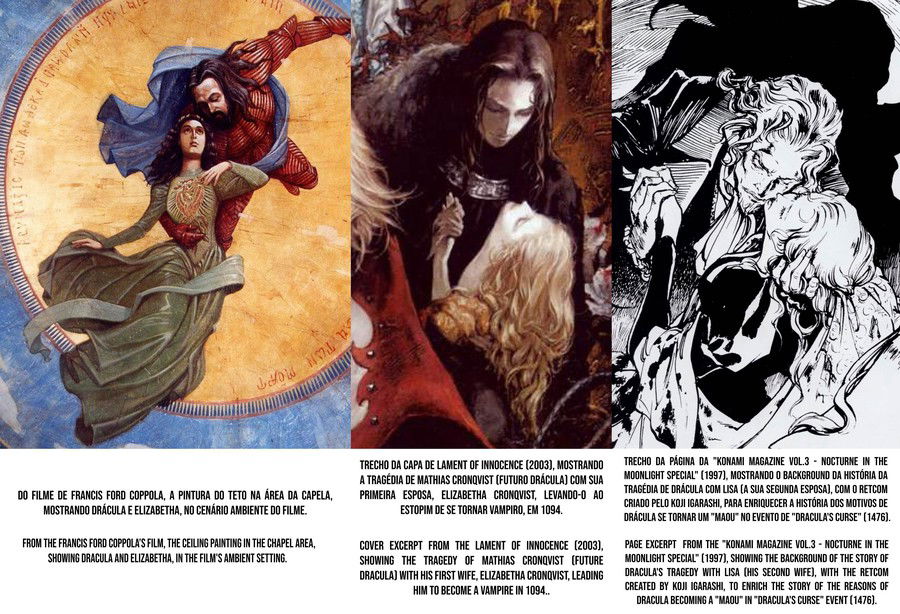
The Francis Ford Coppola’s movie Dracula was a strong basis for expanding the layers of the story of the franchise's antagonist, where Koji Igarashi justified his transition from human to vampire in the Lament of Innocence game and later, with the same tragedy, from vampire to Maou in the events of Dracula's Curse.
It is worth noting that Koji Igarashi was a respectable storyteller, as his success in Konami's eyes was sparked by the script for the visual novel game (Dating Simulator) called Tokimeki Memorial, released on the PC Engine in 1994, where this game was great in sales, due to the way IGA managed to tie together and create good stories - and this was a key entry point for him to have his space in Castlevania in the future.
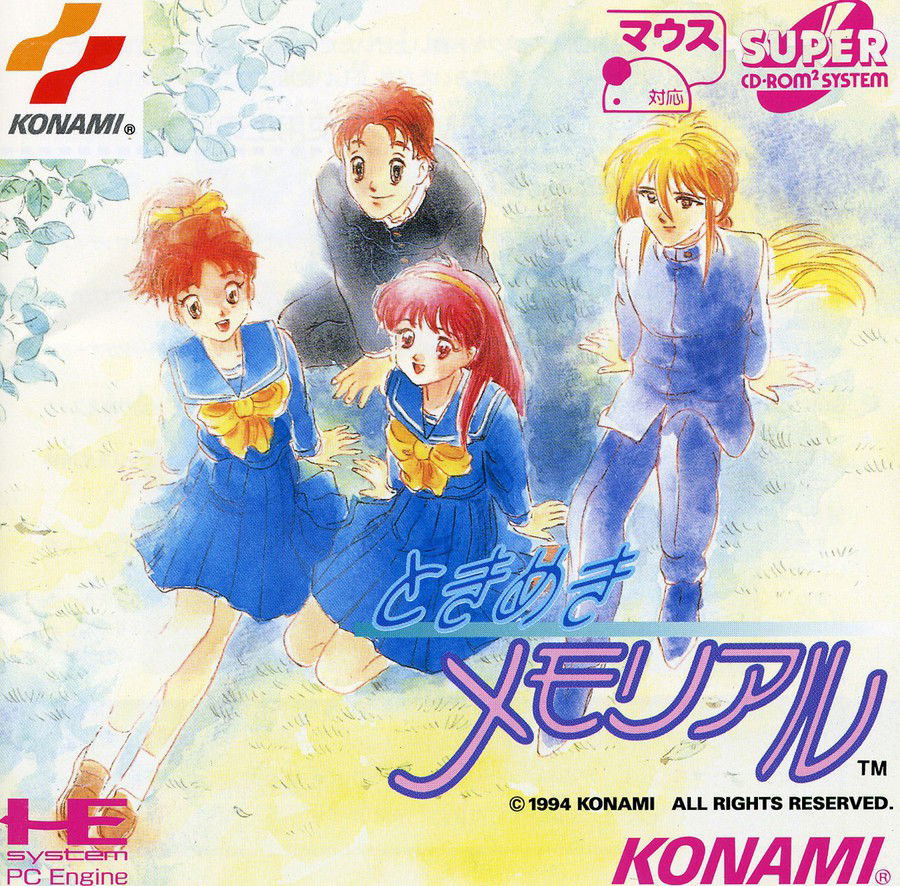
MetroidVania: the restructuring into a new style of game
Many people think and argue that Symphony of the Night is the father of the MetroidVania genre, but things are not exactly like that.
The concept of RPG and exploration of places to access new sections, improvements and upgrades of your equipment already existed in the franchise, and everything was in it: in the hated Simon’s Quest!
Yes, the second game for the Famicon/NES, by Hitoshi Akamatsu, already had these features, where the main character, Simon Belmont, walked throughout the entire area of Transylvania.
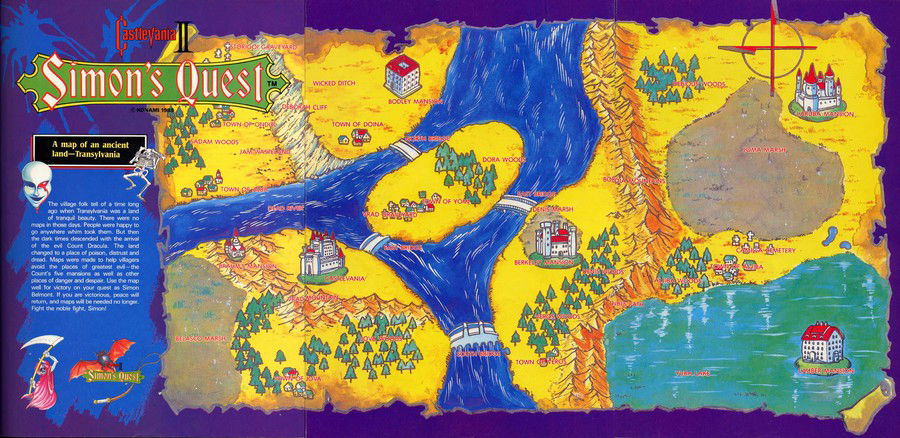
There, Simon Bemont has accessories, the parts of Dracula that grant him specific functions in his “build”, such as, for example, the Rib of Vlad/Rib of Dracula, which gives the hero a “shield”, the item Laurel that grants invincibility to the hunter, as well as orbs, tools to access certain points in mansions or elements of the route during the journey -- and this is talking about a game from 1987 in Japan, ten years before Symphony of the Night!
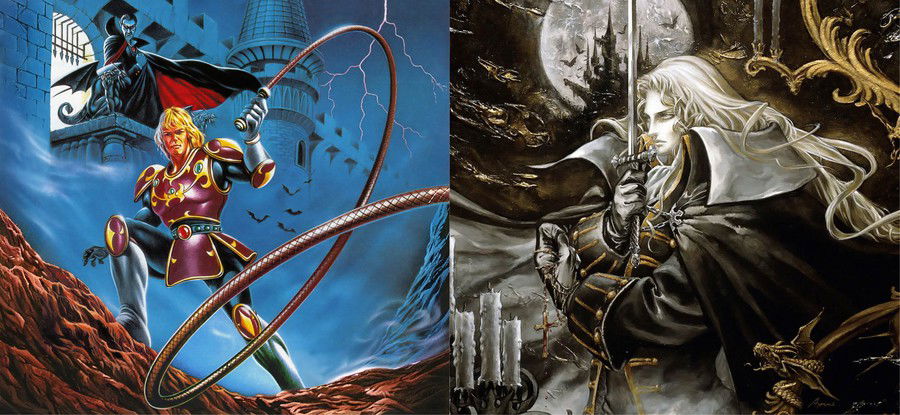
So, when Koji became the head of the Symphony of the Night project, he only improved this old concept and brought a new look with the technology that could be offered by the PlayStation 1 and of course, diversifying for the first time the protagonism, which left the axis of the Belmont and relatives of branches of the family tree, to focus on Adrian Fahrenheit Tepes, Dracula’s son.
Artstyle
Many artists have worked on the franchise, but the most well-known are Noriyasu Togakushi, who brought the classic art of the first three NES games with an artistic style of Frank Frazetta; the self-taught Ayami Kojima, for her gothic and surreal style, which many are passionate about and has gotten a large fan base.
What few people know is that in the official Japanese manual, Simon Belmont had a more cartoonish appearance and was red-haired, different from the usual general sense of the “Frazetta” style of art.


Noriyasu Togakushi
His greatest career works were the three covers for the NES games and after that, he disappeared from the industry; his legacy is still remembered by those who like his art.
Ilustrations
 Norseman, by Frank Frazetta."/>
Norseman, by Frank Frazetta."/>
Ayami Kojima

A self-taught artist, she debuted with her work in the game Söldnerschild, by the company KOEI, but her greatest asset that would define her fame around the world would be the art of Symphony of the Night, where she shaped the aesthetics and identity of how the series should follow: horror, goth and all of this mixed with a certain beauty that only she can create.
Using painting techniques with crayon and ink, she manages to be a versatile artist in everything she touches, and always presenting quality after quality.
She has two concept art books and mixed authorial art, which are Santa Lilio Sangre and The Color Kingdom 3 (Shikisai Oukoku 3).
Ilustrations
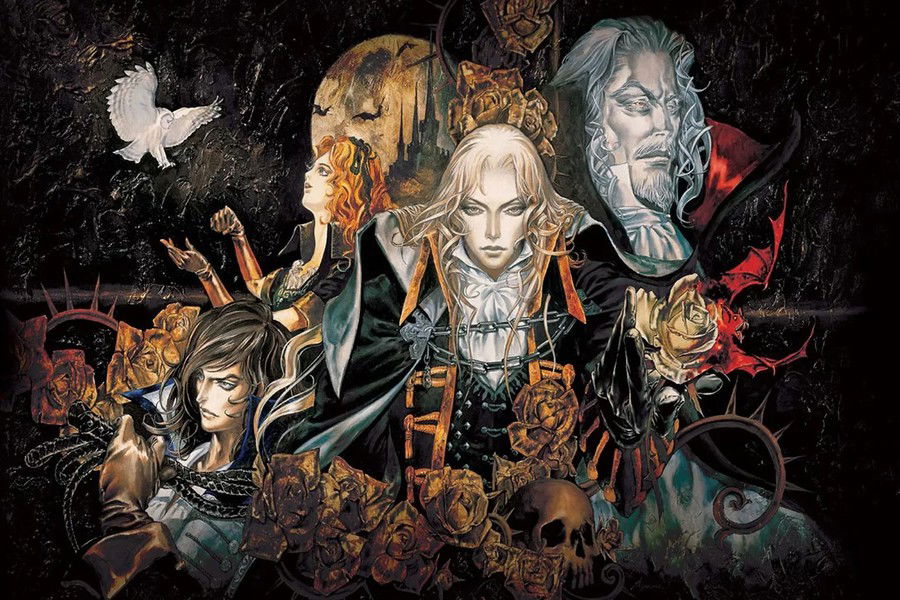

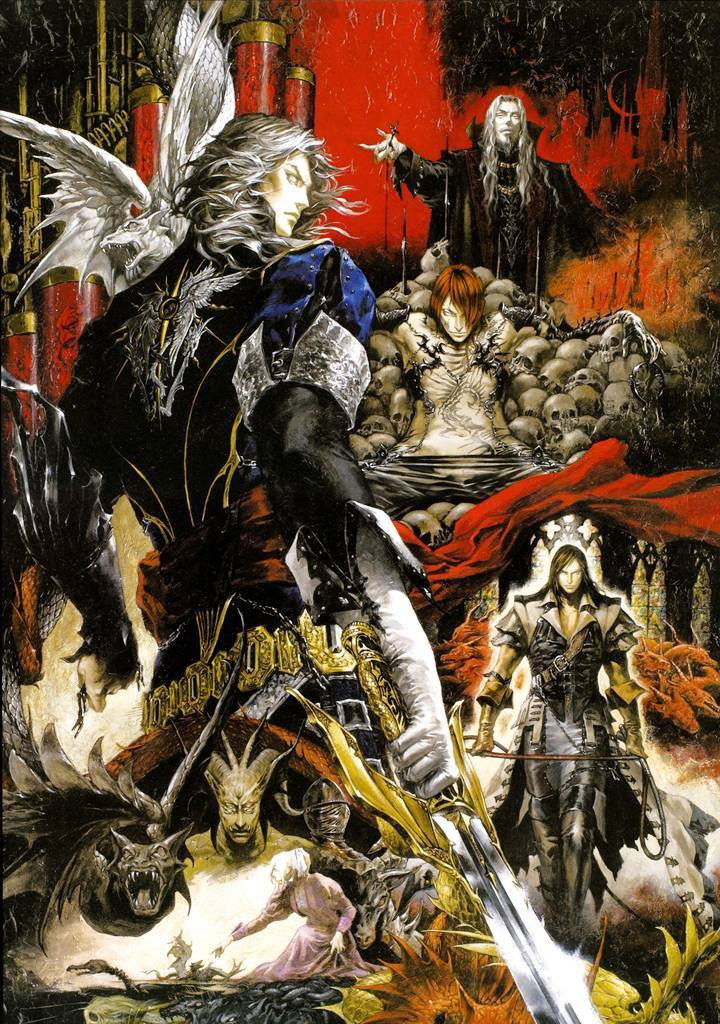
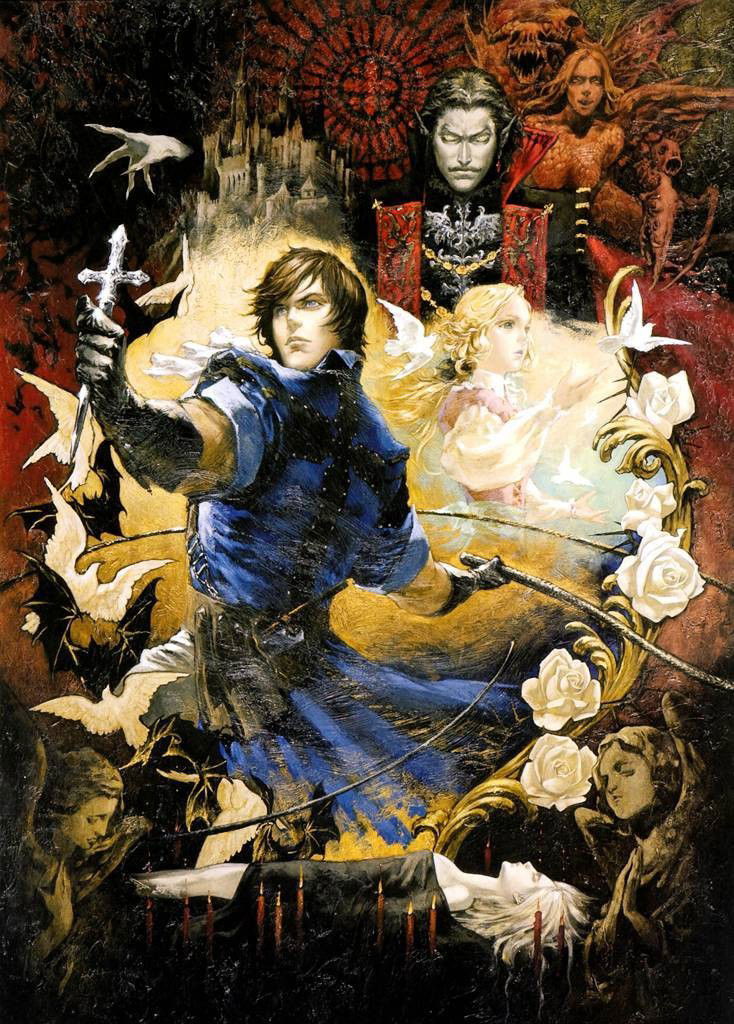
Masaki Hirooka

The artist has worked on other franchises such as Suikoden, Final Fantasy Dimensions, Xenoblade and even for SEGA with Sonic and the Secret Rings. He was responsible for the art of the beautiful and one of the best MetroidVanias in the series (surpassing it in story and RPG mechanics), Order of Ecclesia.
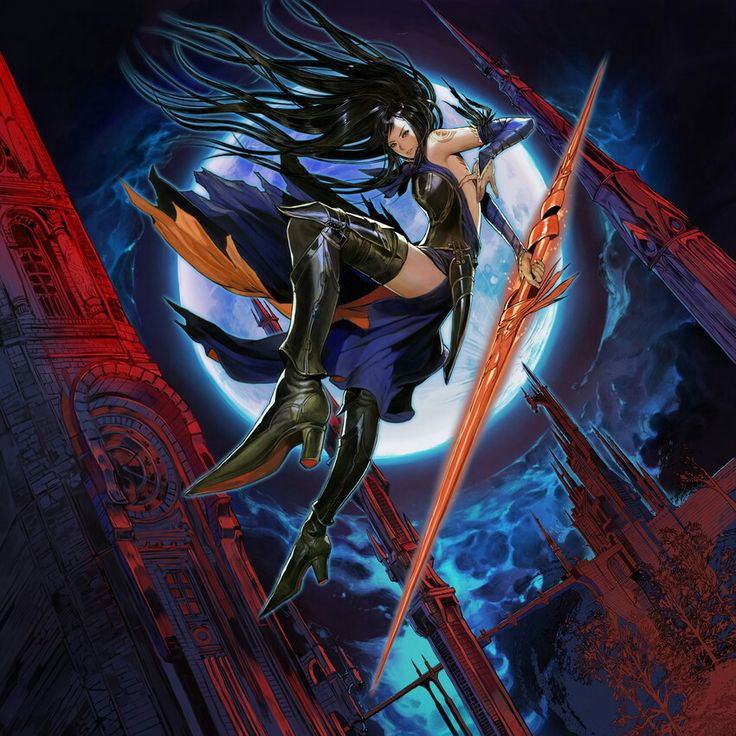
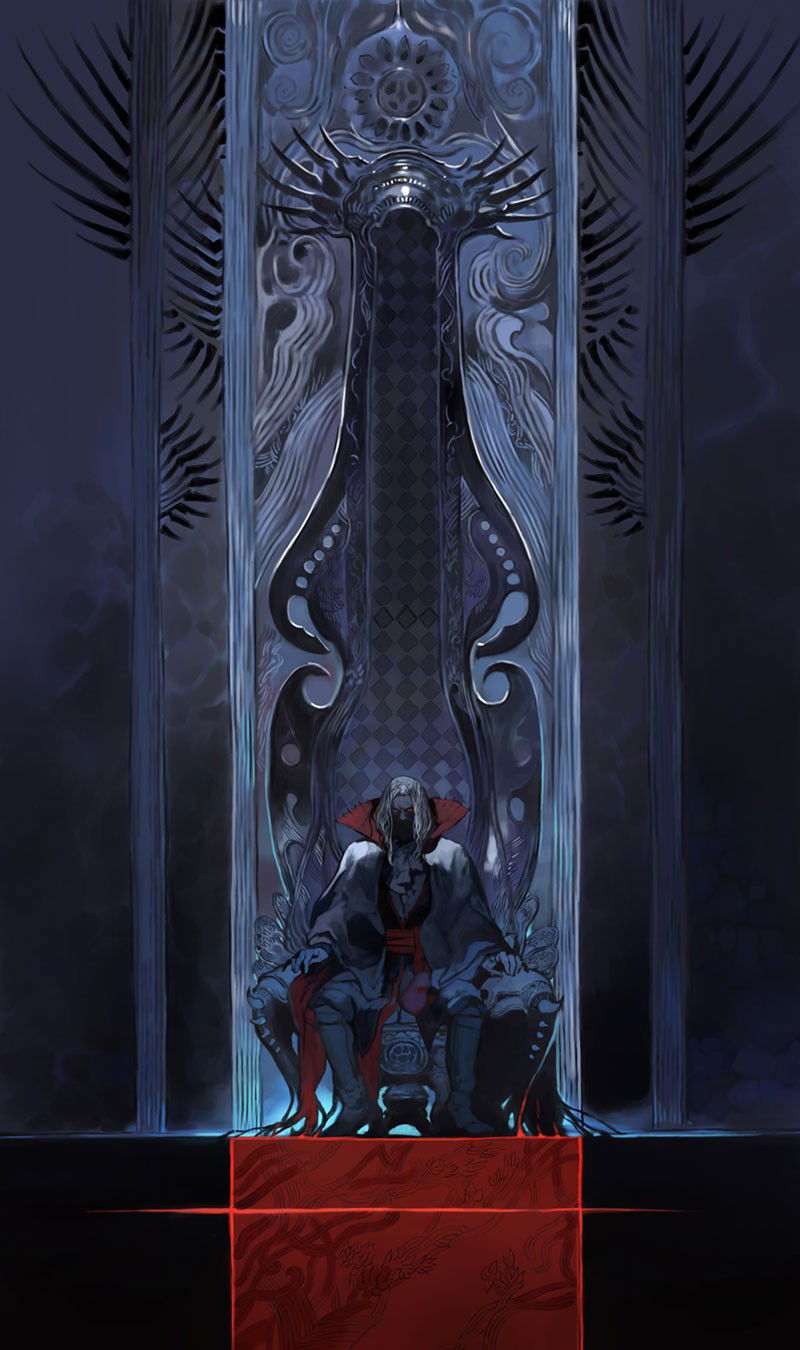
Soundtrack
Another great signature feature of this franchise is its engaging soundtrack, admired by many, from people who don't know much about the franchise to fans themselves who fervently consume not only the original soundtracks but also the official arrangements released by Konami itself, as well as fan arrangements.
Satoe Terashima and Kinuyo Yamashita
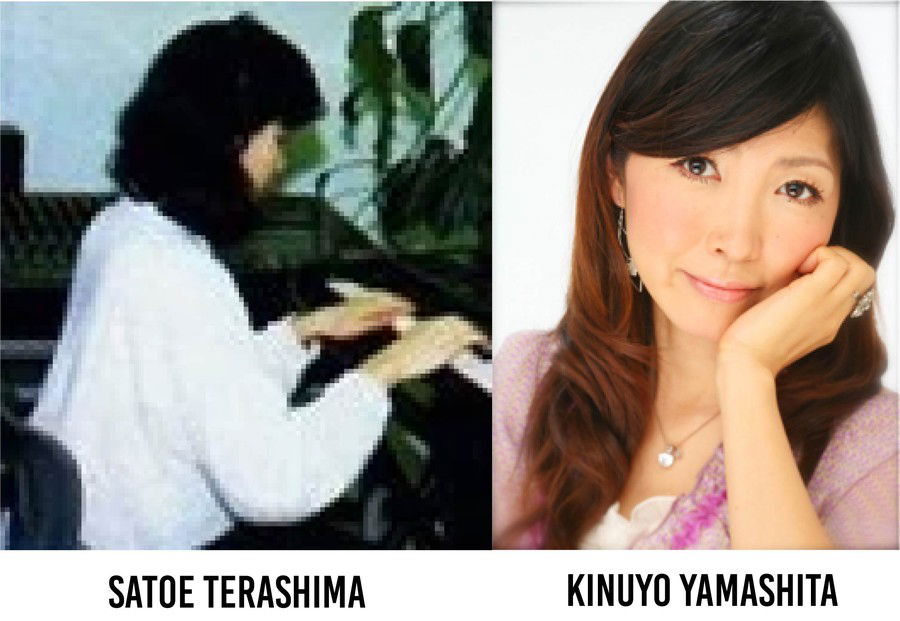
They were the first composers of the franchise's most iconic songs, with the first Castlevania for the FAMICON/NES, such as the iconic themes Vampire Killer and Heart of Fire.
Vampire Killer, by Satoe Terashima
Heart of Fire, by Kinuyo Yamashita
Kenichi Matsubara
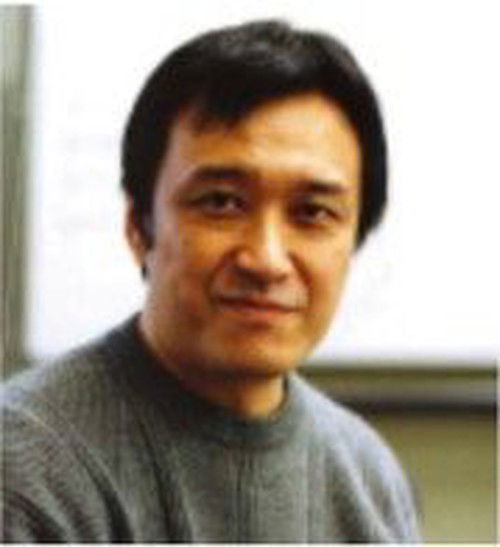
He’s the second most well-known composer of the franchise, responsible for the soundtrack of Simon's Quest (the second game in the franchise), and the non-canonical arcade game in the franchise, HAUNTED CASTLE.
His best-known works include Silence of Daylight, Cross Your Heart and Bloody Tears*.
Silence of Daylight
Bloody Tears
Michiru Yamane

The best known songwriter in the franchise, Michiru Yamane began her career with the game Castlevania: Bloodlines (GENESIS/Mega Drive) and later, her trademark would be with Symphony of the Night, showing her repertoire of songs with classical instruments along with modern instruments, with inspirations from jazz, rock and ambient music.
Bloodlines Soundtrack
Symphony of the Night Soundtrack
Lament of Innocence Soundtrack
Curse of Darkness Soundtrack
Order of Ecclesia Soundtrack
Lore
Poetic and creative license with narrative elements
The franchise draws heavily from Eastern concepts such as Shintoism, Buddhism and much of Japanese folklore to enrich the pantheon, as well as Western cultures, both religious and folkloric; so you will see many references to Dracula as Maou (in Japanese 魔王, in romaji, Maō) -- and this will be important in the Lore, when explaining the difference between the period as a vampire and the period as Maou.
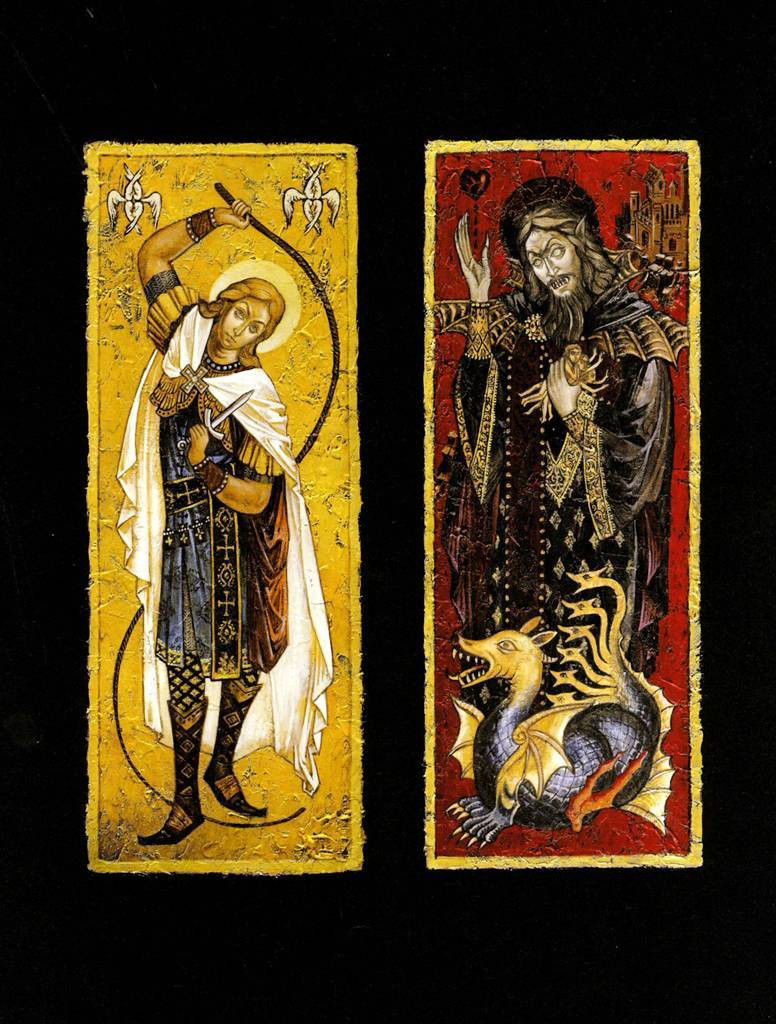
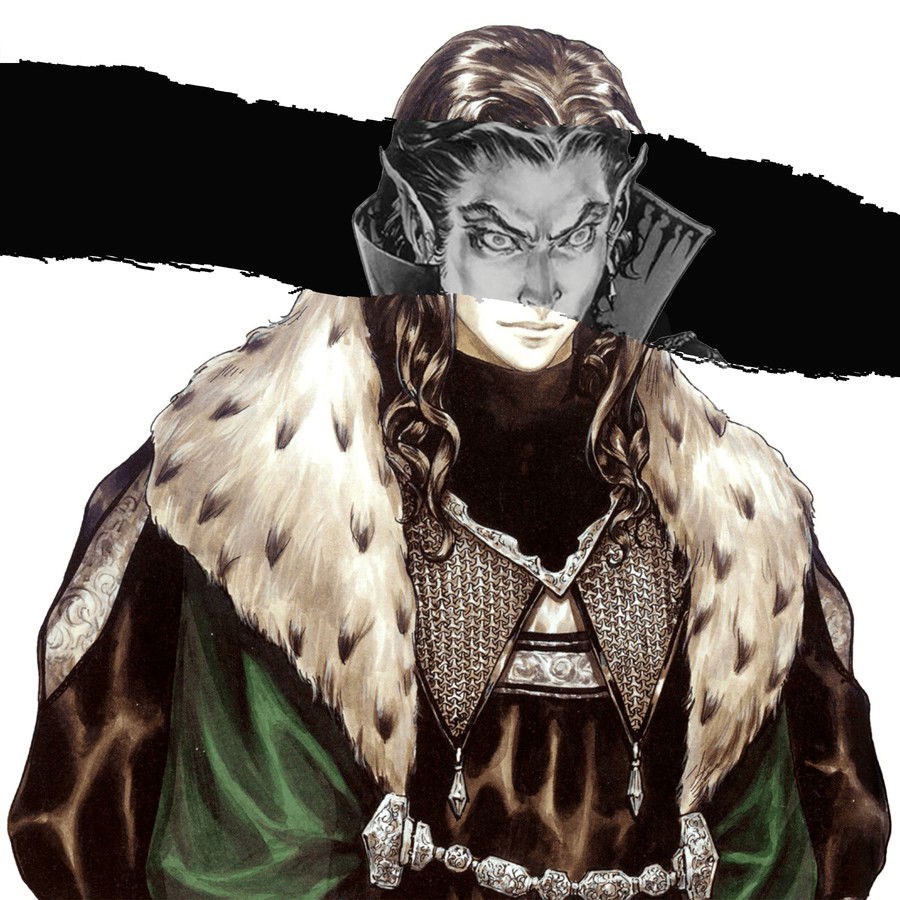
Also, the franchise draws a little from historical events that happened in the past, such as the Crusades, the Two Great Wars; the use of historical characters such as Vlad Tepes III himself, Elizabeth Bathory, Saint Germain; astronomical events such as the Saros Eclipse 145 as well as textual works such as the Prophecy of Nostradamus and literary works as the novel by Bram Stocker to use the name of some of its characters and fit them into the narrative of the games and create a universe of its own -- as there is a huge mistake by the community to associate historical dates when they’re just fictitious elements of this world.

Lore Premise
The main premise of the game is the battle of the Belmont clan against Dracula, the Lord of Darkness, because the importance of the family of hunters is due to the possession of the Vampire Killer whip, the most effective weapon against him.
Even though there are characters who could have stopped Dracula, such as Hector, Alucard, Shanoa and the Morris family, they cannot use the Vampire Killer, and they had opportune situations to do so, but each of them, in their stories, always shows the importance of the Belmont in some sentence, in some situation of storytelling regarding this.
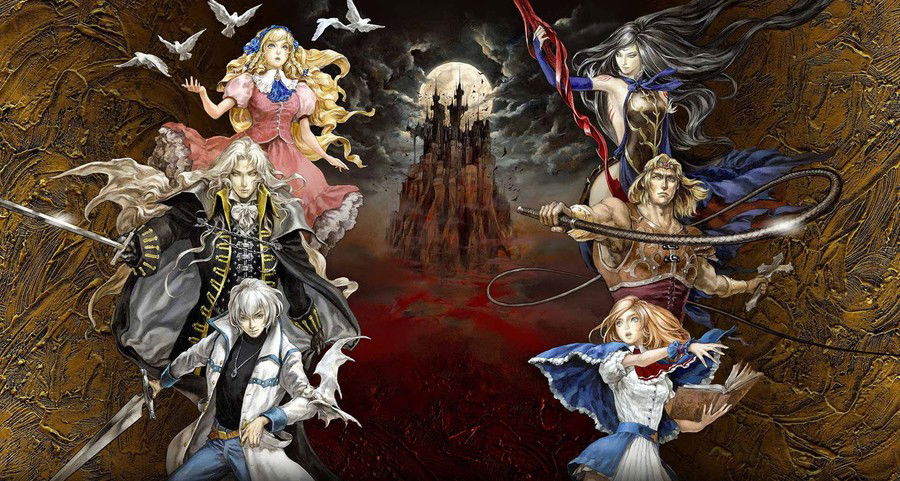
This feud began in 1094 until 1999, precisely the first real confrontation of a member of the family of hunters against the Lord of Darkness was in 1476, in the events of Dracula's Curse; and for generations, the family members passed on the legacy, until they could fulfill their duty. Finally, in mid-August 1999, Dracula was defeated.
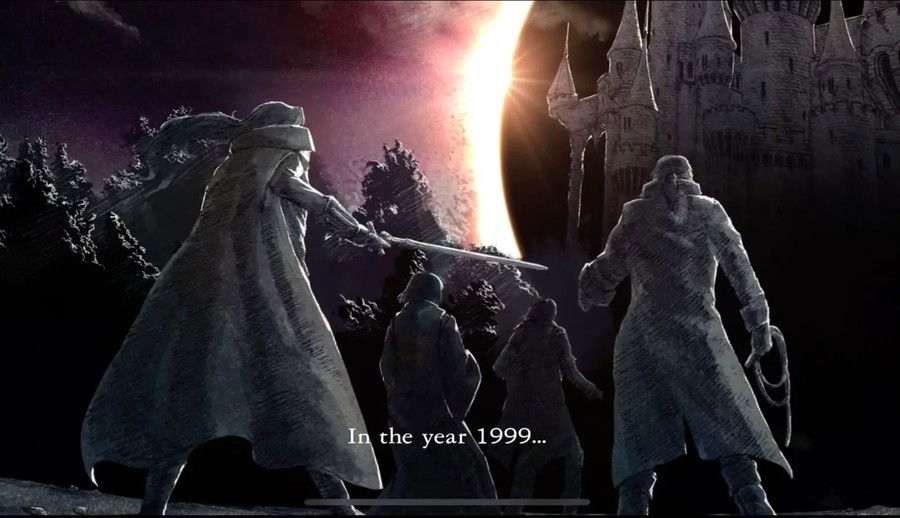
However, he would reincarnate, as shown in the "Nostradamus Prophecy" of the one who would inherit the power to be the new Maou/Lord of Darkness, to take the lead, and this young man would be Soma Cruz, protagonist of the game series Aria of Sorrow (Akumajō Dracula: Akatsuki no Minuet) and Dawn of Sorrow (Akumajō Dracula: Sōgetsu no Jūjika), to fight against his terrible destiny.
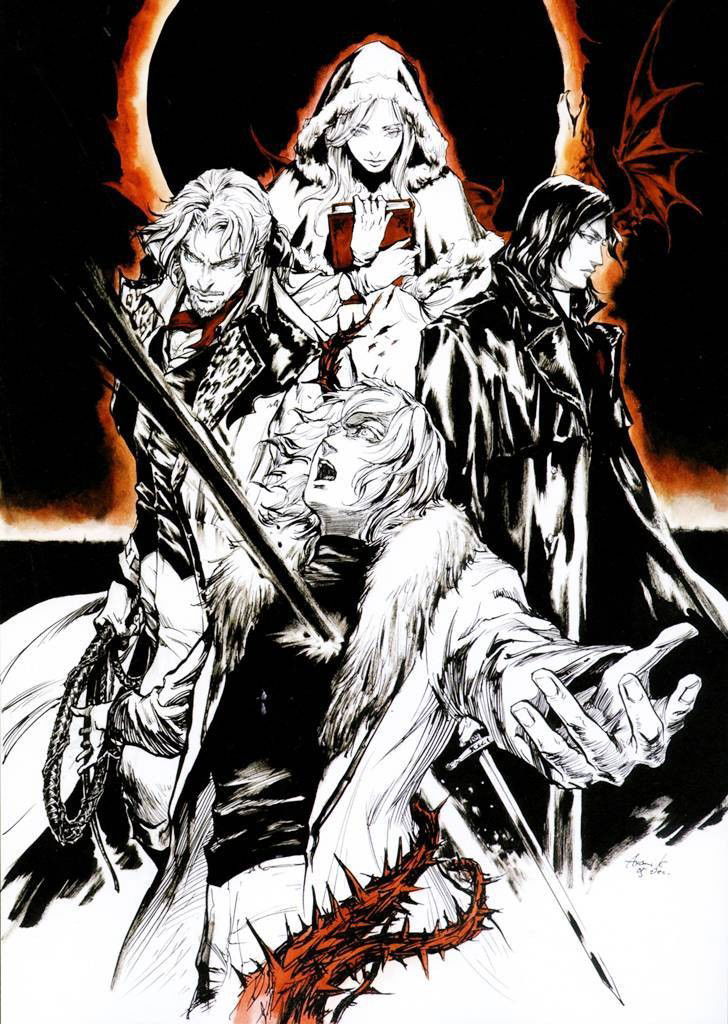
Powers Context: What is the difference between Vampire vs Maou status?
In the games, even though Dracula is the antagonist, he’s at the same time the “protagonist” of the story, as his actions brought about the consequences, not only for the hunters of the Belmont family, but also for himself, his “penance” for being a creature of darkness. However, he had two levels of power.
First, his conversion from human to "vampire”, with the events of Lament of Innocence (1094, in the game event), where he gave up his humanity to become a vampire thanks to the acquisition of the Crimson Stone, a stone derived from the Philosopher's Stone (which only works with vampires), where the bearer has a solid contractual pact with the divine entity, Death (Shinigami), in addition to vampiric powers -- renouncing his original identity, Mathias Cronqvist, and adopting the pseudonym “Dracula”; and second, in the events of Dracula’s Curse (1476, at the time of the game’s events), transitioning from his current status as a “vampire”, already as the established pseudonym, to become a Herald of Chaos, the personification of “All the Evils of the World” or also “Demon King” or “Adversary” (which would be the equivalent of “Satan” in the West), and in this term, in Japanese he’s called Maou.
Maou is derived from the word Mara, which in Buddhist cosmology, is a Regent of the “Sixth Realm of the Wheel of Life”, the Saṃsāra; which according to the story, he would be the last test and obstacle against Buddha to prevent him from reaching Nirvana.
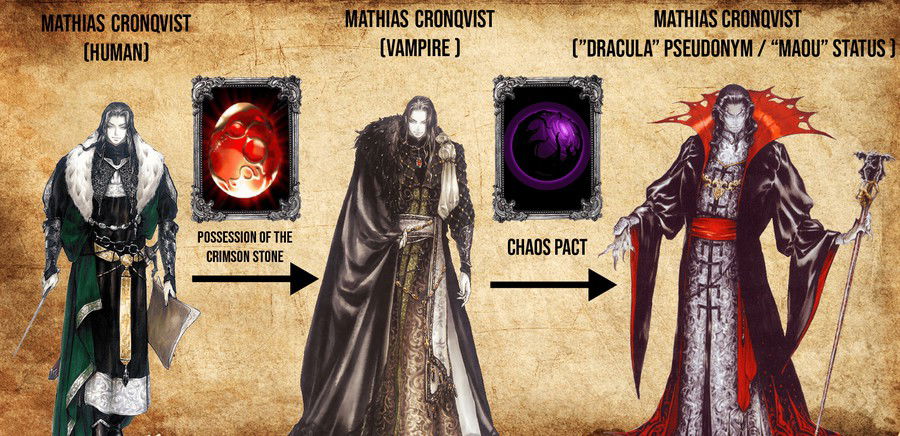
And as stated in the article, Castlevania draws heavily from Eastern philosophy, so with that, it’s explained that Dracula, by obtaining this source of power, making the pact with Chaos, he returns due to the lack of faith in humanity and the bad feelings in the hearts of humans, and that is why in all games, he “always returns”.

Chronological order of canonical games + supplementary material
► 1094 - Castlevania: Lament of Innocence (Playstation 2)
► 1476 - Castlevania III: Dracula’s Curse (FAMICOM/NES)
► 1476|1479 - Castlevania: Curse of Darkness -Prelude of Revenge- and Castlevania: Curse of Darkness, by Kou Sasakura* (manga)
► 1479 - Castlevania: Curse of Darkness (Playstation 2)
► 1576 - Castlevania: The Adventure (Game Boy Color)
► 1591 - Castlevania II: Belmont’s Revenge (Game Boy Color)
► 1691 - Castlevania (FAMICOM/NES)
► 1698 - Castlevania II: Simon’s Quest (FAMICOM/NES)
► 1748 - Castlevania: Harmony of Dissonance (Game Boy Advanced)
► 1792 - Castlevania: Rondo of Blood (PC Engine/Turbografx)
► 1797 - Castlevania: Symphony of the Night (PSX/Playstation 1)
► 1798 - Castlevania: Nocturne of Recollection (Radio Drama)
► 18?? - Castlevania: Order of Ecclesia (Nintendo DS)
► 1897 - Events of Quincey Morris to defeat Dracula (mentioned content in Koji Igarashi's manuals, games and interviews about the Morris clan -- there is no game)
► 1917 - Castlevania: Bloodlines (GENESIS/Mega Drive)
► 1944 - Castlevania: Portrait of Ruin (Nintendo DS)
► 1999 - The Legendary Battle of 1999 (there is no game about the Julius Belmont event, it is only mentioned punctually in the Sorrow series games themselves about its importance, and in interviews with Koji Igarashi)
► 2035 - Castlevania: Aria of Sorrow (Game Boy Advanced)
► 2036 - Castlevania: Dawn of Sorrow (Nintendo DS)
► 2037 - Castlevania: Ricordanza of the God Abyss (Light Novel written by Ryōgo Narita and supervised by Koji Igarashi)
► 20?? - Castlevania: Grimoire of Souls (iOS - Apple)
On YouTube, Guilherme Gustavo Gohr, known as Master Alucard, together with Mário Santos (@emppixel) - known in the Brazilian community as a great reference in Castlevania - made a timeline with precise data, bibliographic material, references from Japanese manuals and detailed info regarding the canonical contents to clear up any type of doubt that always hangs over the community and remained for many years with guesses - and to top it off, with international participations such as Robert Belgrade, the voice of Alucard from Symphony of the Night (1997) and Douglas Rye, voice actor for Dracula in Curse of Darkness (2005).
It's in Brazilian Portuguese, but you can turn on english subtitles!
Relevant collabs and projects with Castlevania in recent years
Super Smash Bros: Ultimate

Simon Belmont (from the first Castlevania for NES) and Richter Belmont (Rondo of Blood), were inserted into the fighting universe of the Smash Bros franchise, a project by the great Masahiro Sakurai, who managed to bring affection and respect to the original material of the games with the “Guardian Monsters of Dracula” (Giant Bat, Medusa, Mummy, The Creature), the soundtrack and other elements of the source material in this universe are so unique and rich as this game, mixing it in a comical way with the Nintendo elements present in several games.
And of course, not to forget the merit of excellent soundtracks arranged and remixed from the games present in the title, like this iconic version of Cross Your Heart , a song from the first stage of Haunted Castle.
Dead Cells
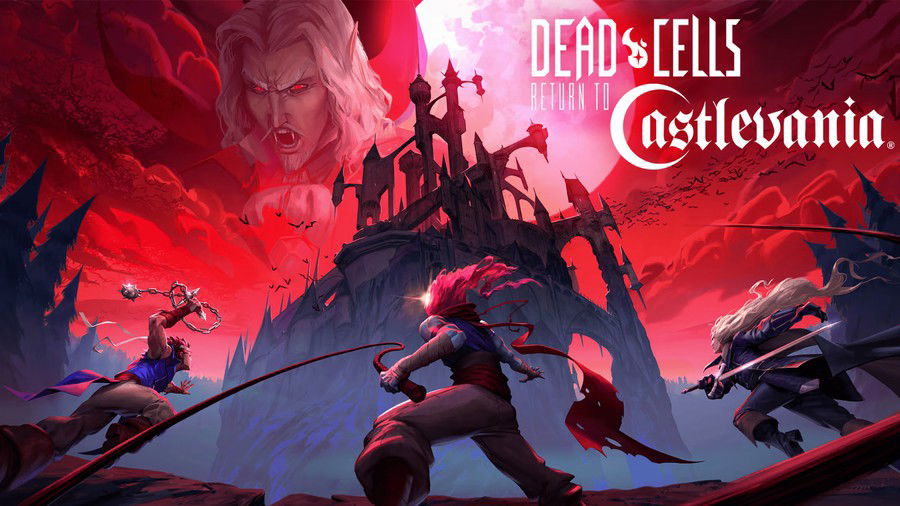
This famous game of the “RogueLike” genre that has gained repercussion in recent times, in this one year of duration, the game had the DLC in homage to elements of Castlevania, from the main character with several customizable skins of protagonists of the franchise with their own powers, in addition to items and scenarios themed to what is in Dracula's Castle, and of course, battles against Death (Shinigami) and Dracula.
Dead by Daylight

With the success of this online “cat and mouse” game, the Behavior’s franchise also brought a nice surprise to fans, with the partnership with Konami; and offering in the first wave in September, Dracula himself as the pursuer and Trevor Belmont as the “victim” -- with Trevor being able to use skins of other characters in the store such as Leon Belmont, Simon Belmont and Alucard, and of course, Dracula with the skins of his versions of Castlevania Chronicles and Dracula X (version of Rondo of Blood for SNES).
The character Mikayla Reid also has the skins of Sypha Belnades (heroine of Dracula’s Curse alongside Trevor Belmont, from the legendary quartet) and Kate Denson with the skin of Maria Renard, in the version of Symphony of the Night.
In addition, the second wave with more updates, called Dominus, was announced on October 1st, 2024, which will feature the following news:
► Dracula with the True Form Skin from Circle of the Moon
► Trevor Belmont with the Soma Cruz Skin, main character in the Sorrow saga
► Yui Kimura, character from Dead by Daylight, with the skin of Shanoa, from Castlevania: Order of Ecclesia
► Felix Richter, another Dead by Daylight original character, with theJonathan Morris Skin, one of the main characters from Castlevania: Portrait of Ruin*
► The Nurse, another original character from the game, a killer, with the Death (Shinigami) skin from the Symphony of the Night version.
Castlevania Dominus
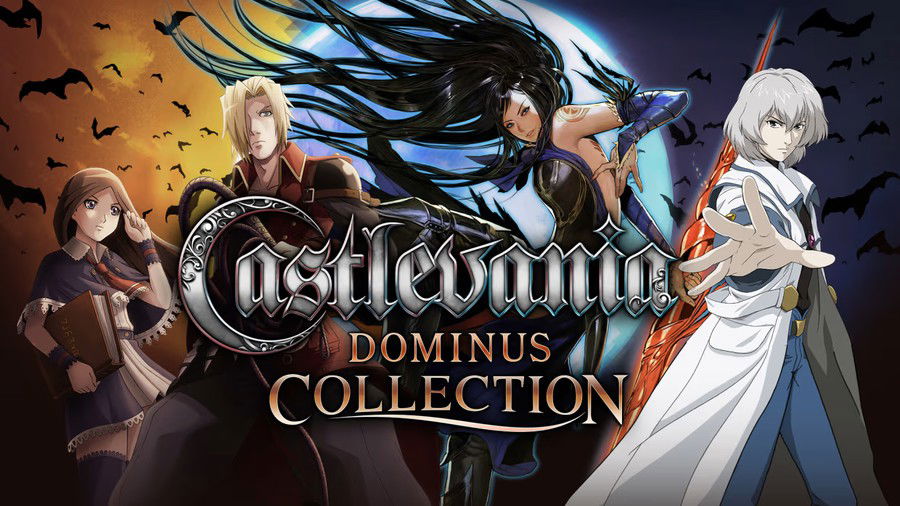
And a pleasant surprise for fans was the release of the DS games collection, which had been forgotten for almost 20 years and was now packaged into a single product.
With the games Dawn of Sorrow, Portrait of Ruin and Order of Ecclesia, Konami revamped the collection with new layouts for introducing the games in the selection, complete bestiaries, the “Rewind” mechanic and the permanence of the “Save State” (as it was in the previous collections, the Anniversary Collection and the Advanced Collection), exclusive artwork that Konami never made available to the public and much more.
And the other surprise that took everyone by surprise was the remake of Haunted Castle, an arcade game from the 80s that is a “reinterpretation” of another narrative point in Simon Belmont’s journey to save his fiancée, Serena, from Dracula’s kidnapping -- where this game was known for its unplayable difficulty and the terrible reputation of being “card-hogging” on purpose, and for the poor quality with which the original game was developed: only three months -- where the third-party company, M2 Co., Ltd., revitalized this game and improved A LOT (emphasis on a lot) the quality of the gameplay and graphics, keeping the 2D charm of the ClassicVania style.
And of course, the game's soundtracks can't be left out, with a breathtaking guitar arrangement, like this version of Lullaby of the Devils.
The game is available on Steam, PlayStation, Nintendo Switch and Xbox.
Castlevania: Seal of the Eclipse
As a fan project that is progressing slowly, the project is conceived by Mário Santos (@emppixel) with a phenomenal team of artists and his team, Team Umbra, which includes foreign composers Dracula9AntiChapel, Chernabogue, Aensland and also Brazilian illustrator Junki Sakuraba, responsible for the characters' concept arts.
The game is an attempt to bring a glimpse of what the Battle of 1999 was like, a project that Koji Igarashi was unable to finish. In the 2D style of ClassicVanias, the game draws heavily from the source of Dracula's Curse with the gameplay of several simultaneous characters with their specific abilities, respecting the legacy of each one with:
- Julius Belmont using the same ability as his ancestor, Trevor Belmont, with the legendary whip, the Vampire Killer, and the use of Sub-Weapons.
- Lenora Belnades, as the current representative of the Belnades clan, as well as her ancestor Sypha Belnades, with the use of elemental magic.
- Timothy Danasty, being the descendant member of the Danasty family, like his ancestor, Grant Danasty, with acrobatic skills and handling of firearms and bladed weapons.
- Alucard, as the same classic system of Dracula’s Curse, with the use of his vampiric abilities such as transforming into a bat, using fireballs (Hellfire), as well as using his weapons inherited from his mother's side, his sword and spear.
Opening
Screenshots and Progession
Preview of the Soundtrack
Conclusions
I hope you enjoyed this article, basically about a franchise that I have a lot of affection for and grew up with, playing it when I was seven years old with my Dynavision and my first contact was with Castlevania for the NES and to this day, I play it with joy.
What about you? What is your favorite game? Soundtrack? Comment below about your stories with the franchise.
See you next time!










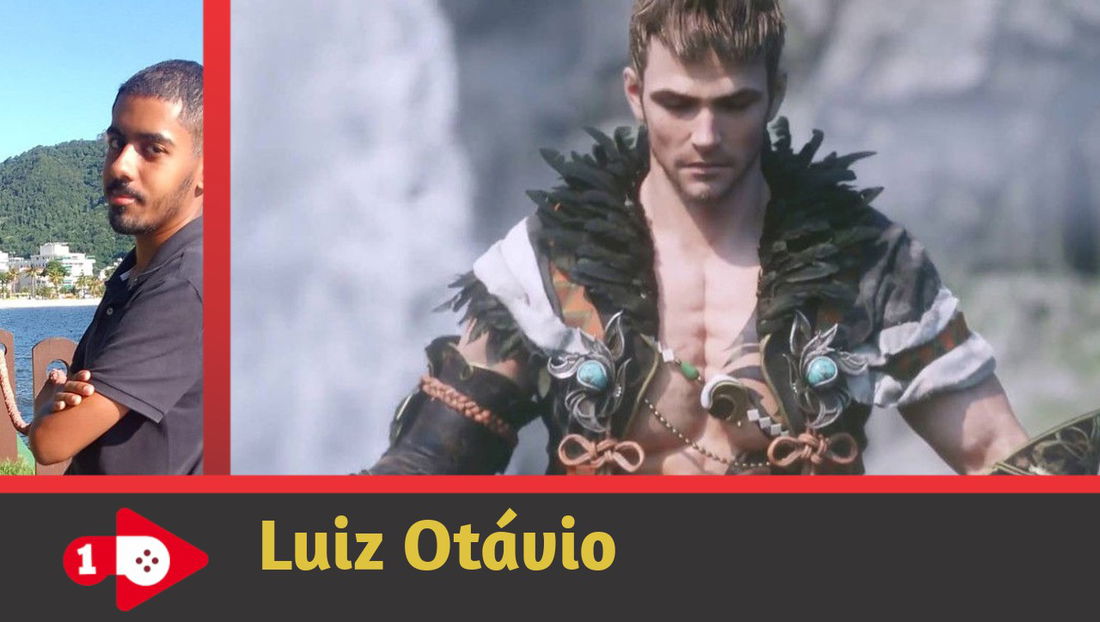



— Comments 0
, Reactions 1
Be the first to comment